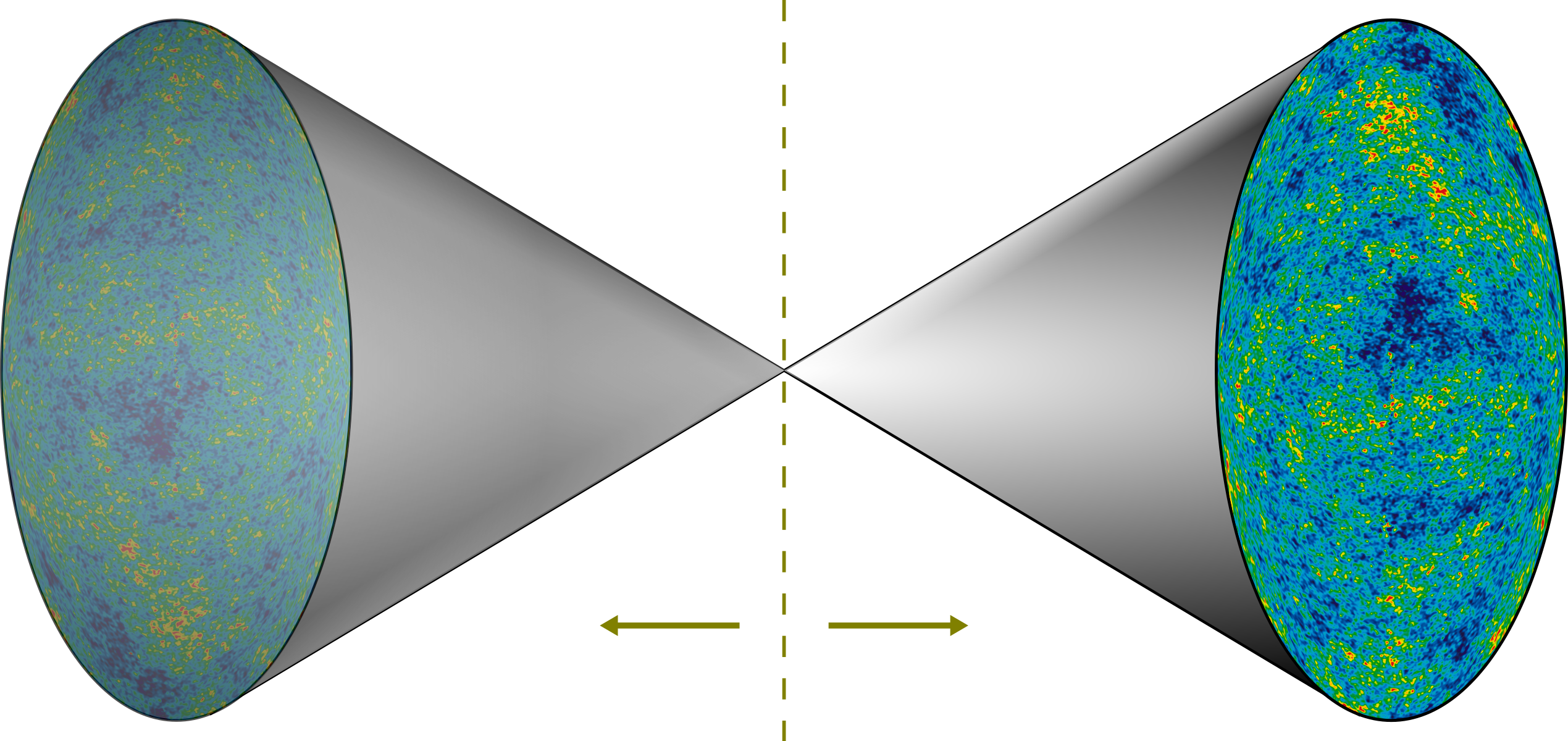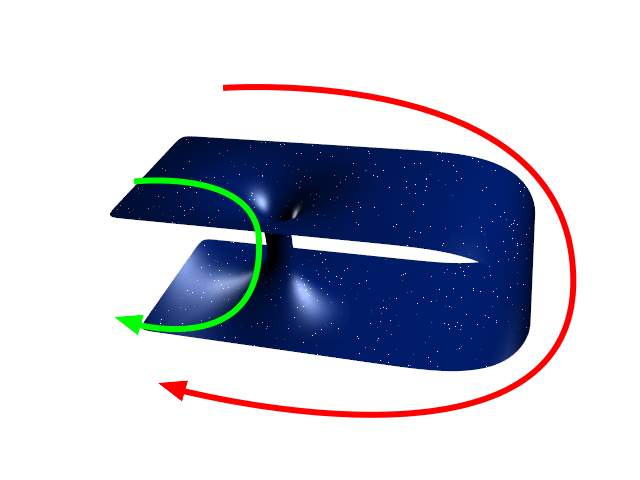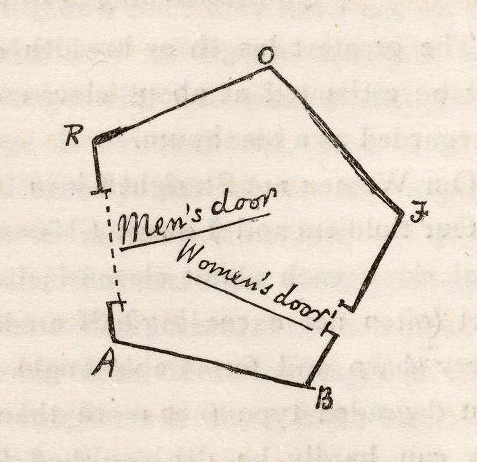|
Hyperspace (book)
''Hyperspace: A Scientific Odyssey Through Parallel Universes, Time Warps, and the 10th Dimension'' (1994, ) is a book by Michio Kaku, a theoretical physicist from the City College of New York. It focuses on Kaku's studies of higher dimensions referred to as hyperspace. The recurring theme of the book is that all four forces of the universe (the strong force, the weak force, electromagnetism, and gravity) become more coherent and their description simpler in higher dimensions. Summary Michio Kaku tries to explain higher dimensions, first analyzing the history of higher dimensions of space and the struggle to unite quantum mechanics and general relativity in one theory. He then goes on to detail theories concerning the 2-D world, named "Flatland". The end of the book discusses such topics as wormholes, parallel universes and the fate of the universe. Contents Part I Entering the Fifth Dimension * Worlds Beyond Space and Time * Mathematicians and Mystics * The Man Who "Saw" the ... [...More Info...] [...Related Items...] OR: [Wikipedia] [Google] [Baidu] |
Hypercube
In geometry, a hypercube is an ''n''-dimensional analogue of a square () and a cube (). It is a closed, compact, convex figure whose 1- skeleton consists of groups of opposite parallel line segments aligned in each of the space's dimensions, perpendicular to each other and of the same length. A unit hypercube's longest diagonal in ''n'' dimensions is equal to \sqrt. An ''n''-dimensional hypercube is more commonly referred to as an ''n''-cube or sometimes as an ''n''-dimensional cube. The term measure polytope (originally from Elte, 1912) is also used, notably in the work of H. S. M. Coxeter who also labels the hypercubes the γn polytopes. The hypercube is the special case of a hyperrectangle (also called an ''n-orthotope''). A ''unit hypercube'' is a hypercube whose side has length one unit. Often, the hypercube whose corners (or ''vertices'') are the 2''n'' points in R''n'' with each coordinate equal to 0 or 1 is called ''the'' unit hypercube. Construction A hyp ... [...More Info...] [...Related Items...] OR: [Wikipedia] [Google] [Baidu] |
Higher Dimensions
In physics and mathematics, the dimension of a mathematical space (or object) is informally defined as the minimum number of coordinates needed to specify any point within it. Thus, a line has a dimension of one (1D) because only one coordinate is needed to specify a point on itfor example, the point at 5 on a number line. A surface, such as the boundary of a cylinder or sphere, has a dimension of two (2D) because two coordinates are needed to specify a point on itfor example, both a latitude and longitude are required to locate a point on the surface of a sphere. A two-dimensional Euclidean space is a two-dimensional space on the plane. The inside of a cube, a cylinder or a sphere is three-dimensional (3D) because three coordinates are needed to locate a point within these spaces. In classical mechanics, space and time are different categories and refer to absolute space and time. That conception of the world is a four-dimensional space but not the one that was found necessary ... [...More Info...] [...Related Items...] OR: [Wikipedia] [Google] [Baidu] |
Popular Physics Books
Popularity or social status is the quality of being well liked, admired or well known to a particular group. Popular may also refer to: In sociology * Popular culture * Popular fiction * Popular music * Popular science * Populace, the total population of a certain place ** Populism, a political philosophy, based on the idea that the common people are being exploited. * Informal usage or custom, as in popular names, as opposed to formal or scientific nomenclature Companies * Popular, Inc., also known as ''Banco Popular'', a financial services company * Popular Holdings, a Singapore-based educational book company * The Popular (department store), a chain of department stores in El Paso, Texas, from 1902 to 1995 * ''The Popular Magazine'', an American literary magazine that ran for 612 issues from November 1903 to October 1931 Media Music * "Popular" (Darren Hayes song) (2004), on the album ''The Tension and the Spark'' * "Popular" (Eric Saade song) (2011), on the album ... [...More Info...] [...Related Items...] OR: [Wikipedia] [Google] [Baidu] |
Books By Michio Kaku
A book is a medium for recording information in the form of writing or images, typically composed of many pages (made of papyrus, parchment, vellum, or paper) bound together and protected by a cover. The technical term for this physical arrangement is ''codex'' (plural, ''codices''). In the history of hand-held physical supports for extended written compositions or records, the codex replaces its predecessor, the scroll. A single sheet in a codex is a leaf and each side of a leaf is a page. As an intellectual object, a book is prototypically a composition of such great length that it takes a considerable investment of time to compose and still considered as an investment of time to read. In a restricted sense, a book is a self-sufficient section or part of a longer composition, a usage reflecting that, in antiquity, long works had to be written on several scrolls and each scroll had to be identified by the book it contained. Each part of Aristotle's ''Physics'' is called a bo ... [...More Info...] [...Related Items...] OR: [Wikipedia] [Google] [Baidu] |
SF Signal
''SF Signal'' was a science fiction blog and fanzine published from 2003 to 2016. The site was launched by John DeNardo and JP Frantz and focused on writings, events, and other topics focusing on the genres of science fiction, fantasy, and other related genres. It hosted three podcasts, one of which won the 2014 Hugo Award for Best Fancast. The site itself won two Hugo Awards for Best Fanzine, 2012 and 2013. History The website was launched in 2003 by John DeNardo and JP Frantz after they noticed a lack of blogs focusing on science fiction. They decided to launch a blog where they could discuss science fiction and related genre writings, events and ideas that were interesting to them. As the website's popularity grew, they began to incorporate more original content and hired additional staff members as well as brought in new contributors. ''SF Signal'' published three podcasts: ''SF Crossing the Gulf'', ''The Three Hoarsemen'', and ''The SF Signal Podcast''. In 2012 ''SF Signa ... [...More Info...] [...Related Items...] OR: [Wikipedia] [Google] [Baidu] |
Ian Crawford (astrobiologist)
Ian Andrew Crawford (born 1961) is a British professor of planetary science and astrobiology at Birkbeck, University of London in the United Kingdom.Professor Ian Crawford. Birkbeck College. Retrieved 7 May 2021. Education and early life Born in , Cheshire, Crawford was educated at North Cestrian Grammar School in from 1972 to 1979. Crawford studied Astronomy at |
The Observatory (journal)
''The Observatory'' is a publication, variously described as a journal, a magazine and a review, devoted to astronomy. It appeared regularly starting in 1877, and it is now published every two months. The current editors are David Stickland, Bob Argyle and Steve Fossey. Although it is not published by the Royal Astronomical Society, it publishes the reports of its meetings. Other features are the extensive book reviews and "Here and There", a collection of misprints and ridiculous statements of astronomical interest. The founder and first editor (1877–1882) was William Christie, then chief assistant at the Royal Observatory and later Astronomer Royal. Notable subsequent editors include: * Arthur Eddington (1913–1919) * Harold Spencer Jones (1915–1923) * Richard van der Riet Woolley (1933–1939) * William McCrea (1935–1937) * Margaret Burbidge (1948–1951) * Antony Hewish (1957–1961) * Donald Lynden-Bell (1967–1969) * Carole Jordan (1968–1973) * Jocelyn Bel ... [...More Info...] [...Related Items...] OR: [Wikipedia] [Google] [Baidu] |
Los Angeles Times
The ''Los Angeles Times'' (abbreviated as ''LA Times'') is a daily newspaper that started publishing in Los Angeles in 1881. Based in the LA-adjacent suburb of El Segundo since 2018, it is the sixth-largest newspaper by circulation in the United States. The publication has won more than 40 Pulitzer Prizes. It is owned by Patrick Soon-Shiong and published by the Times Mirror Company. The newspaper’s coverage emphasizes California and especially Southern California stories. In the 19th century, the paper developed a reputation for civic boosterism and opposition to labor unions, the latter of which led to the bombing of its headquarters in 1910. The paper's profile grew substantially in the 1960s under publisher Otis Chandler, who adopted a more national focus. In recent decades the paper's readership has declined, and it has been beset by a series of ownership changes, staff reductions, and other controversies. In January 2018, the paper's staff voted to unionize and final ... [...More Info...] [...Related Items...] OR: [Wikipedia] [Google] [Baidu] |
Multiverse
The multiverse is a hypothetical group of multiple universes. Together, these universes comprise everything that exists: the entirety of space, time, matter, energy, information, and the physical laws and constants that describe them. The different universes within the multiverse are called "parallel universes", "other universes", "alternate universes", or "many worlds". History of the concept According to some, the idea of infinite worlds was first suggested by the pre-Socratic Greek philosopher Anaximander in the sixth century BCE. However, there is debate as to whether he believed in multiple worlds, and if he did, whether those worlds were co-existent or successive. The first to whom we can definitively attribute the concept of innumerable worlds are the Ancient Greek Atomists, beginning with Leucippus and Democritus in the 5th century BCE, followed by Epicurus (341-270 BCE) and Lucretius (1st century BCE). In the third century BCE, the philosopher Chrysippus ... [...More Info...] [...Related Items...] OR: [Wikipedia] [Google] [Baidu] |
Wormhole
A wormhole (Einstein-Rosen bridge) is a hypothetical structure connecting disparate points in spacetime, and is based on a special Solutions of the Einstein field equations, solution of the Einstein field equations. A wormhole can be visualized as a tunnel with two ends at separate points in spacetime (i.e., different locations, different points in time, or both). Wormholes are consistent with the General relativity, general theory of relativity, but whether wormholes actually exist remains to be seen. Many scientists postulate that wormholes are merely projections of a Four-dimensional space, fourth spatial dimension, analogous to how a two-dimensional (2D) being could experience only part of a three-dimensional (3D) object. Theoretically, a wormhole might connect extremely long distances such as a billion light years, or short distances such as a few meters, or different points in time, or even multiverse, different universes. In 1995, Matt Visser suggested there may be ma ... [...More Info...] [...Related Items...] OR: [Wikipedia] [Google] [Baidu] |
Flatland
''Flatland: A Romance of Many Dimensions'' is a satirical novella by the English schoolmaster Edwin Abbott Abbott, first published in 1884 by Seeley & Co. of London. Written pseudonymously by "A Square", the book used the fictional two-dimensional world of Flatland to comment on the hierarchy of Victorian culture, but the novella's more enduring contribution is its examination of dimensions. Several films have been made from the story, including the feature film ''Flatland'' (2007). Other efforts have been short or experimental films, including one narrated by Dudley Moore and the short films '' Flatland: The Movie'' (2007) and '' Flatland 2: Sphereland'' (2012). Plot The story describes a two-dimensional world occupied by geometric figures; women are simple line segments, while men are polygons with various numbers of sides. The narrator is a square, a member of the caste of gentlemen and professionals, who guides the readers through some of the implications of life ... [...More Info...] [...Related Items...] OR: [Wikipedia] [Google] [Baidu] |
String Theory
In physics, string theory is a theoretical framework in which the point-like particles of particle physics are replaced by one-dimensional objects called strings. String theory describes how these strings propagate through space and interact with each other. On distance scales larger than the string scale, a string looks just like an ordinary particle, with its mass, charge, and other properties determined by the vibrational state of the string. In string theory, one of the many vibrational states of the string corresponds to the graviton, a quantum mechanical particle that carries the gravitational force. Thus, string theory is a theory of quantum gravity. String theory is a broad and varied subject that attempts to address a number of deep questions of fundamental physics. String theory has contributed a number of advances to mathematical physics, which have been applied to a variety of problems in black hole physics, early universe cosmology, nuclear physics, and conde ... [...More Info...] [...Related Items...] OR: [Wikipedia] [Google] [Baidu] |






